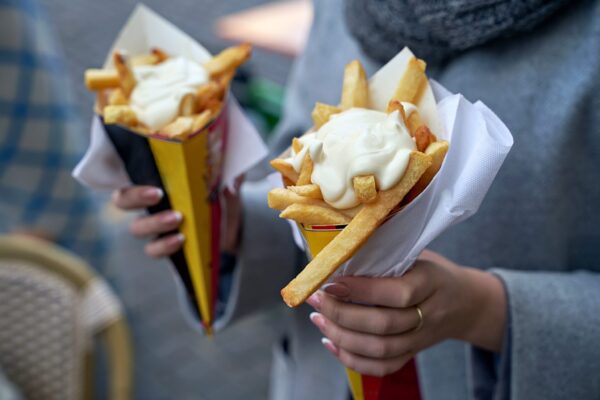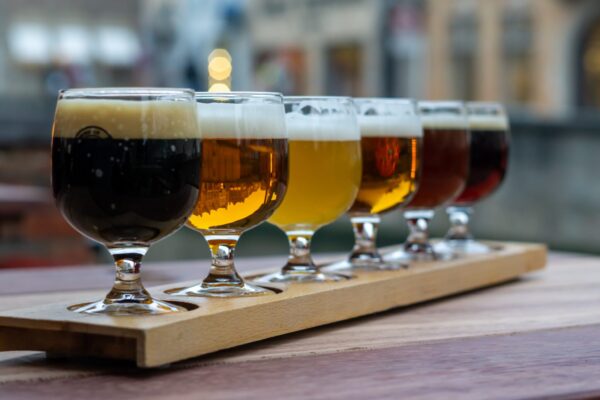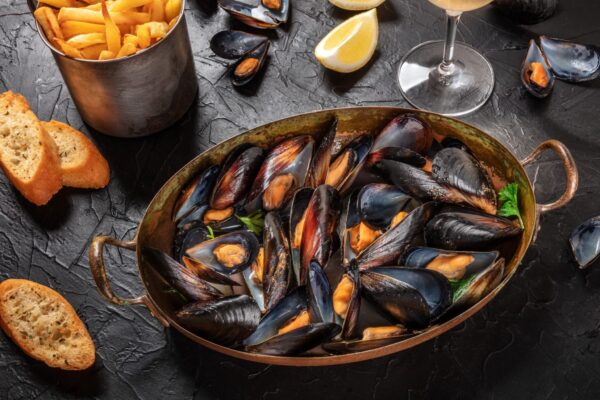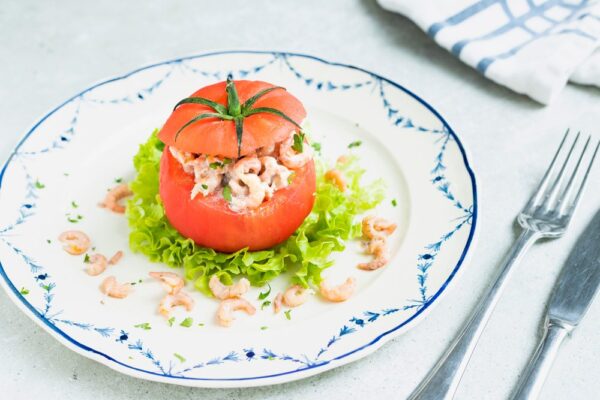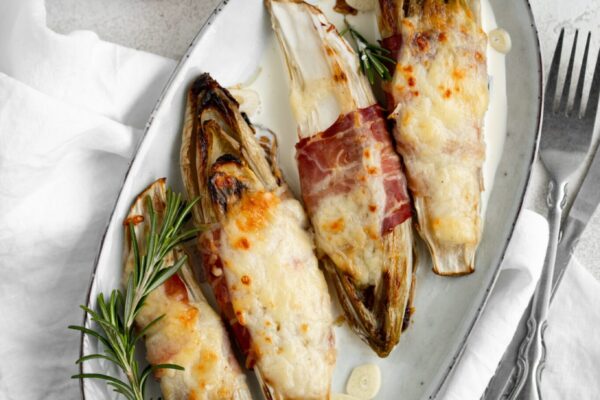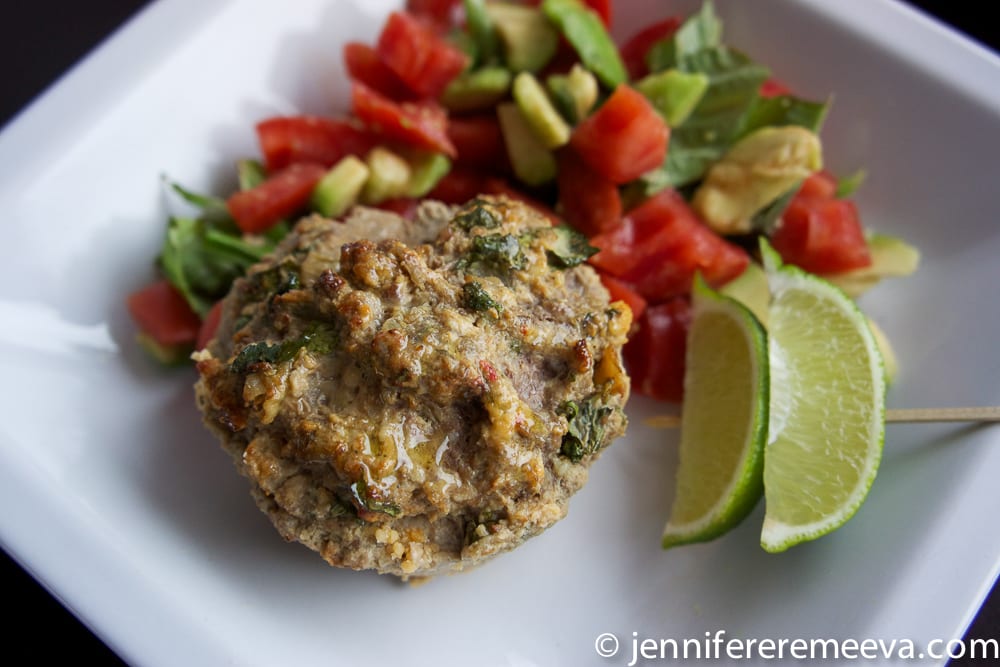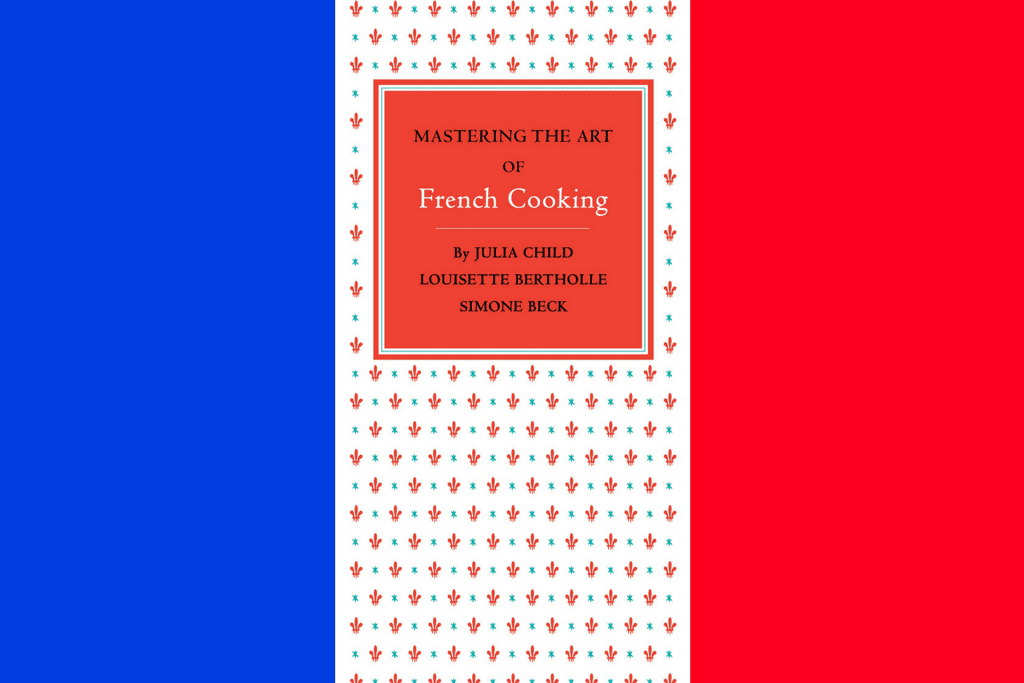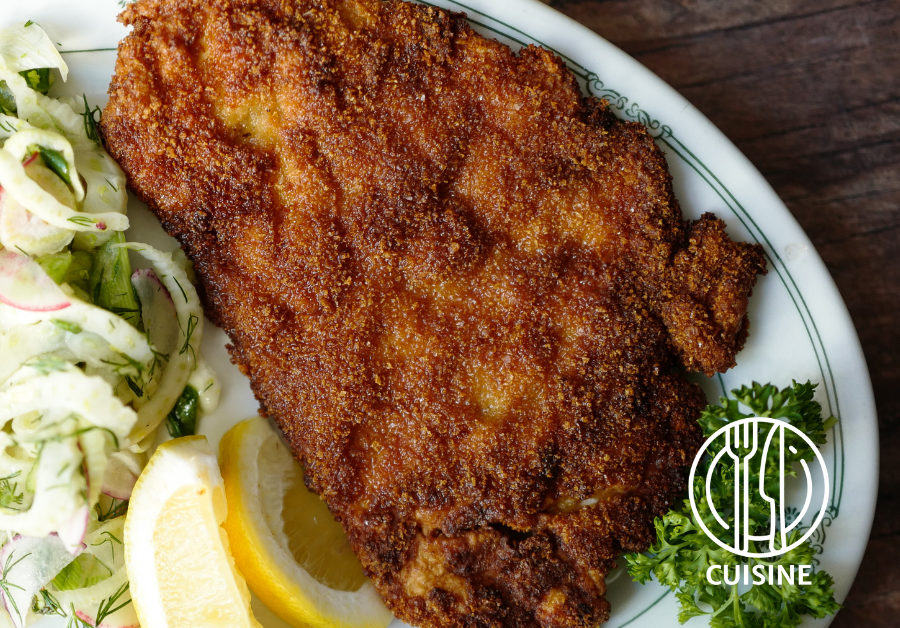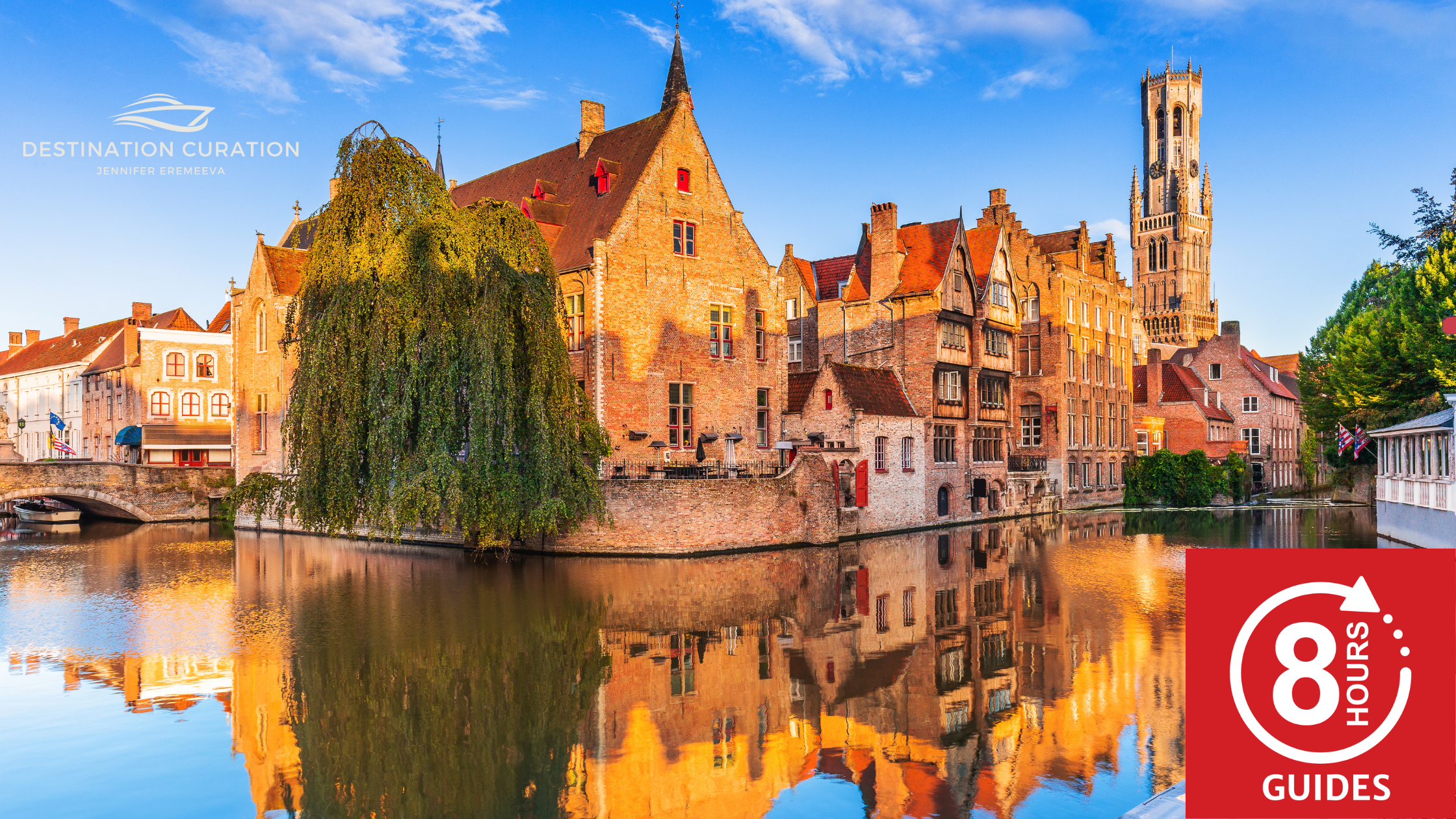
Eight hours is more than enough time to craft a Bruges itinerary that takes in the primary highlights of the Old Town with its historic buildings, the stately canals and bridges, delectable chocolate shops, cozy restaurants and beer halls, and other main tourist attractions. This is a beautiful city that retains much of its medieval charm.
This post contains affiliate links, including links from the Amazon Associates programs. These links will direct you to products I recommend for further exploration and enjoyment of the topics I cover on my website and in my lectures. See more in the Privacy Policy below.
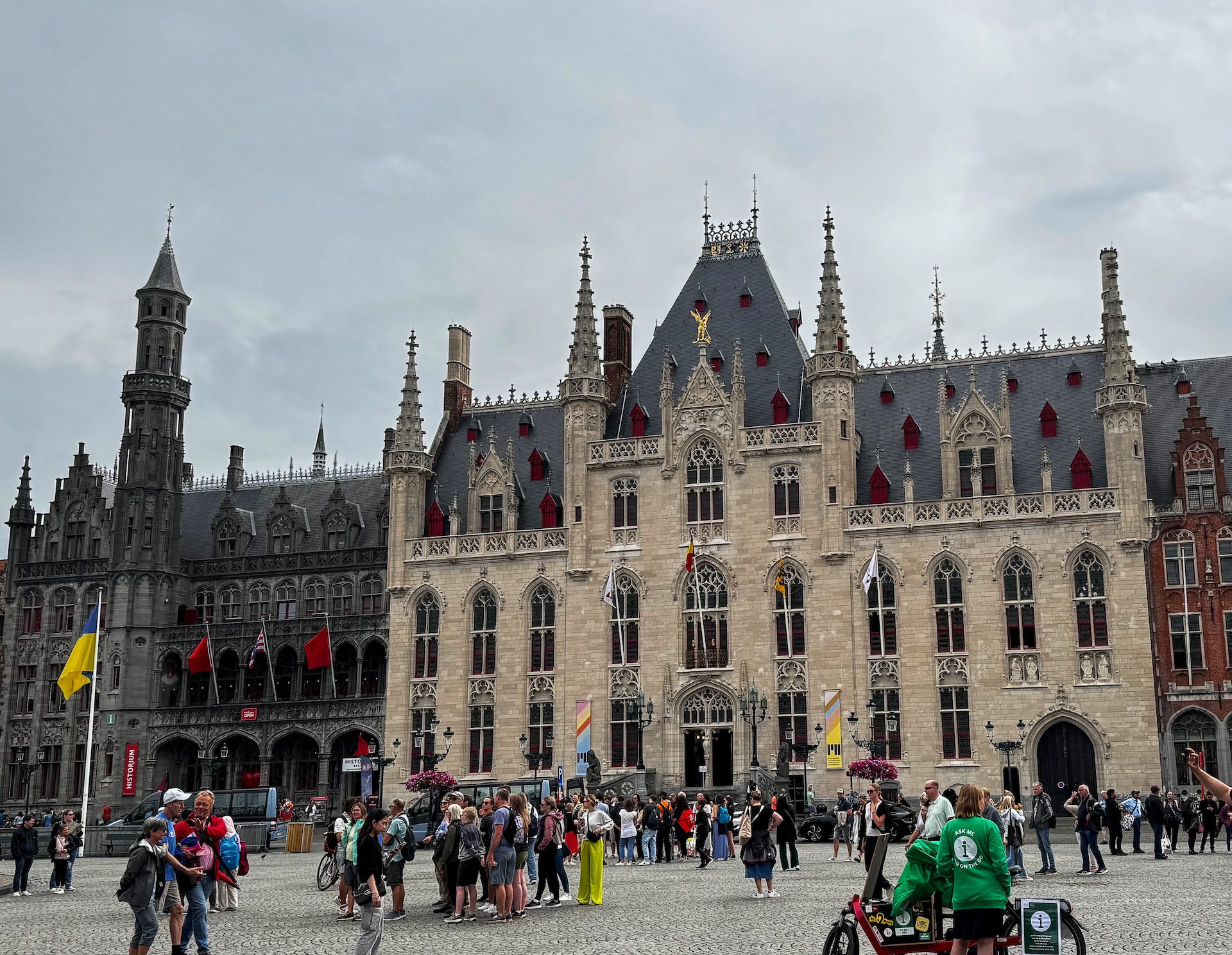
Markt Square | Photo Credit: Jennifer Eremeeva
The Best Things to Do in Bruges
Explore the Historical Centre of Bruges
Begin in the colorful main square Markt (Market Square) also known as the Grote Markt and splurge on an overpriced coffee or hot chocolate in one of the elegant cafes that line the square’s perimeter. These charming cafes are the best places to enjoy a splendid view of the medieval guild houses — including the famous De Beurze inn — the first and most important building in the world’s first financial center, as well as the iconic Belfry Tower, the symbol of the city. If time permits, hire one of the horse-drawn carriages to guide you through the historical center of Bruges.
If you are up for it, climb up the 336 steps to the top of the Belfry Tower to enjoy great views across one of Europe’s prettiest cities.
From Markt, make your way to Burg Square where you will see the Gothic Town Hall, which is one of the oldest in Belgium, dating back to 1376. Inside, the vaulted ceiling and 19th-century murals with scenes of the history of Bruges are very impressive. Make your way to the Council Chamber to enjoy a look at the exquisite wooden vaulted ceiling.
Explore the Historical Centre of Bruges
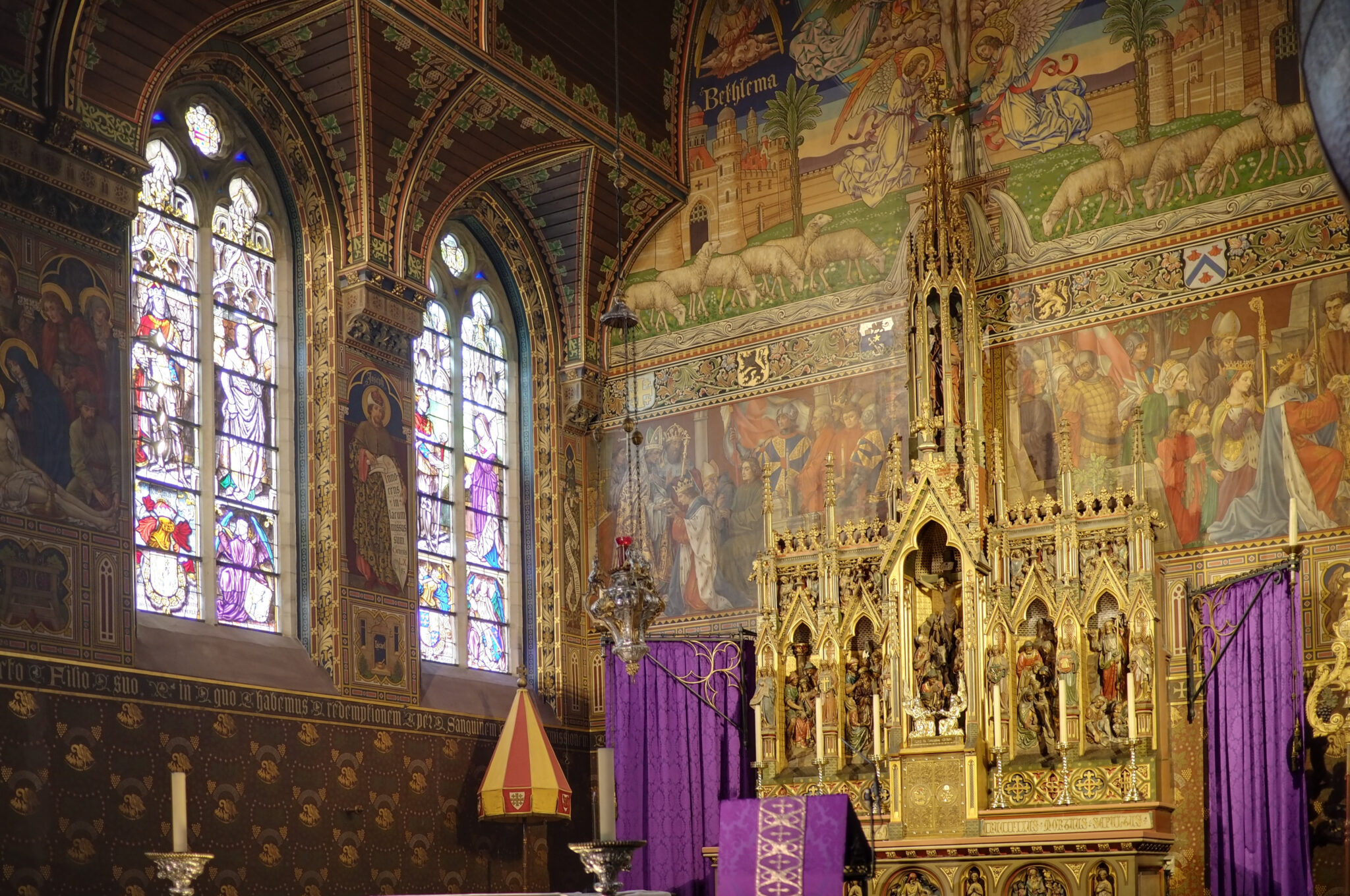
The Basilica of the Holy Blood | Photo Credit: KL KL via Wikimedia Commons
Next, visit the Basilica of the Holy Blood, which dates back to the 12th century, and is famed for its highly venerated relic: a vial believed to contain a cloth with blood shed by Jesus Christ during his crucifixion. The basilica is the centerpiece of the annual Procession of the Holy Blood, which has taken place in Bruges since 1303, and today takes the form of a vibrant medieval pageant.
The Basilica of the Holy Blood is a marvelous example of the transition from the Romanesque to the Gothic styles. The interior has very detailed stone carvings, exceptionally fine stained-glass windows, and a plethora of gold decoration to underscore the importance not only of the precious relic it houses but also of Bruges’s piety and wealth.
Finish up at Jan van Eyckplein, which is named after Bruges’s famed Flemish painter, who created the Ghent Altarpiece and the Arnolfini portrait.
In the high season (summer months), Bruges can be very crowded with entry tickets hard to come by. Consider booking these guided tours with the option to be picked up at Zeebrugge to make the most of your time in Bruges.
- Bruges Tour with Canal Cruise from Zeebrugge Cruise Port
- “Essential Brugge” Photo Tour – 3hr private city tour & workshop
- Private shore excursion from Zeebrugge to Bruges with driver and guide
- All-in-One Bruges Shore Excursion from Zeebrugge
- Exclusive PRIVATE Walking Tour of Bruges
- Comprehensive Shore Excursion in Bruges including Leisure Time
- Bruges: Private Historical Highlights Walking Tour
Visit Michelangelo’s Bruges Madonna at the Church of Our Lady Bruges
The 13th-century Church of Our Lady is on my must-see list for Bruges, not only for the priceless sculpture it houses but also because of its stunning Gothic architecture and the graves of Charles the Bold, the last Duke of Burgundy, and his daughter, Mary of Burgundy, who married Maximillian von Habsburg after the grisly death of her father in 1477 at the Battle of Nancy. Mary and Maximilian are the grandparents of Charles V, King of Spain and Holy Roman Emperor, who would do battle with Martin Luther. Near the Burgundian tombs, you can see the coats of arms of the Knights of the Order of the Golden Fleece, founded by Charles’s father, Philip the Good, and still considered the most prominent order of chivalry in the world.
Michelangelo’s Madonna and Child — one of Michelangelo’s few works to leave Italy — however, is the major draw, and it is well worth the ticket entrance to the Church of Our Lady.
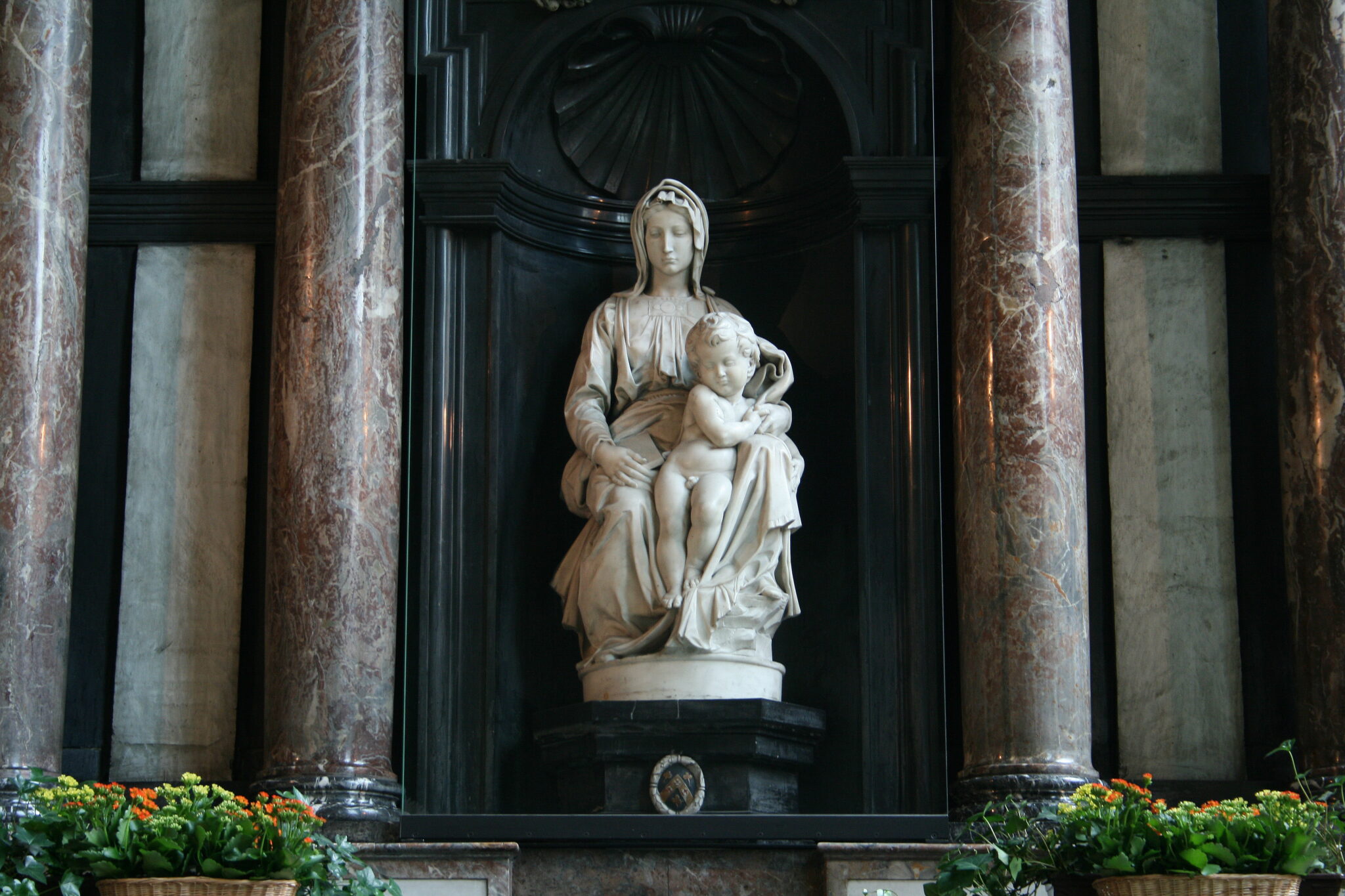
Michelangelo’s Bruges Madonna | Photo Credit Pol GRANDMONT via Wikimedia Commons
Michelangelo created the sculpture around 1504, and it was purchased by prominent citizens of Bruges, Italian merchants Alessandro and Giovanni Moscheroni (Mouscron) who donated the priceless statue to the Church of Our Lady in 1514. Its very presence in Bruges speaks to the city’s commercial heft and, and the importance placed on cultural acquisitions by its leading citizens.
There is an extreme serenity and elegance, but also melancholy about the Madonna and Child, better known as the Bruges Madonna, which portrays the Virgin Mary not with the infant Jesus, but with the toddler Jesus. The statue rests in a much darker and blessedly plain niche in a side chapel of the Church of Our Lady and is testimony to Michelangelo’s mastery of portraying deep emotion in stone: the lighter statue almost seems like a light source itself. Mary does not hold her son but supports him loosely as if he were about to make his first independent steps away from her. We can glean that she has a profound understanding of her son’s ultimate fate as she gently averts her eyes away from Jesus as he makes his first moves out of her vigilant care.
Visitors familiar with Michelangelo’s Pieta, which predates the Bruges Madonna by a decade, will note the similar attention to the complex drapery of the Madonna’s robes.
Bruges guards this treasure well since it has almost lost the precious statue numerous times: during the upheaval of the French Revolution, and more recently during World War I as German forces made their brutal way through Belgium, local citizens smuggled the Bruges Madonna out of Bruges aided by German art historian Paul Clemen. The statue was kept there until the end of the war and then returned to the Church of Our Lady.
During World War II, Bruges’s treasure faced a similar threat as the Nazi regime attempted to appropriate all the major masterpieces of Western civilization. Bruges Madonna was certainly on this list, hidden by the Nazis in a salt mine, wrapped in mattresses. This is one of the major plot lines of the excellent film, The Monuments Men, the battalion of art experts who cooperated with Allied Soldiers and members of the Belgian Resistance to retrieve the statue and return it to the Church of Our Lady, where thankfully it has remained.
Address: Mariastraat, 8000 Brugge, Belgium
Explore Bruges by Canal Boat Ride
Bruges is a network of canals and waterways, and the perfect way to see the city is from that vantage point. No trip to Bruges is complete without navigating these canals and waterways for a different perspective of the stunning guild houses, beautiful buildings, panoramic views, soaring spires, and intricate medieval architecture.
A canal boat tour in Bruges lasts for 30 minutes and is a welcome respite if you are lagging a bit from walking. This is a superb way to photograph the city — your boat’s captain doubles as a guide and is very helpful in giving you the heads-up when an important monument is coming up.
From the boat and the canals, you will see aspects of Bruges that you simply can’t on foot: tiny hidden gardens, menacing gargoyles, and spectacular vistas of the city’s key monuments.
Canal cruises operate from March to mid-November, weather permitting. They run frequently throughout the day, typically from 10:00 AM to 6:00 PM.
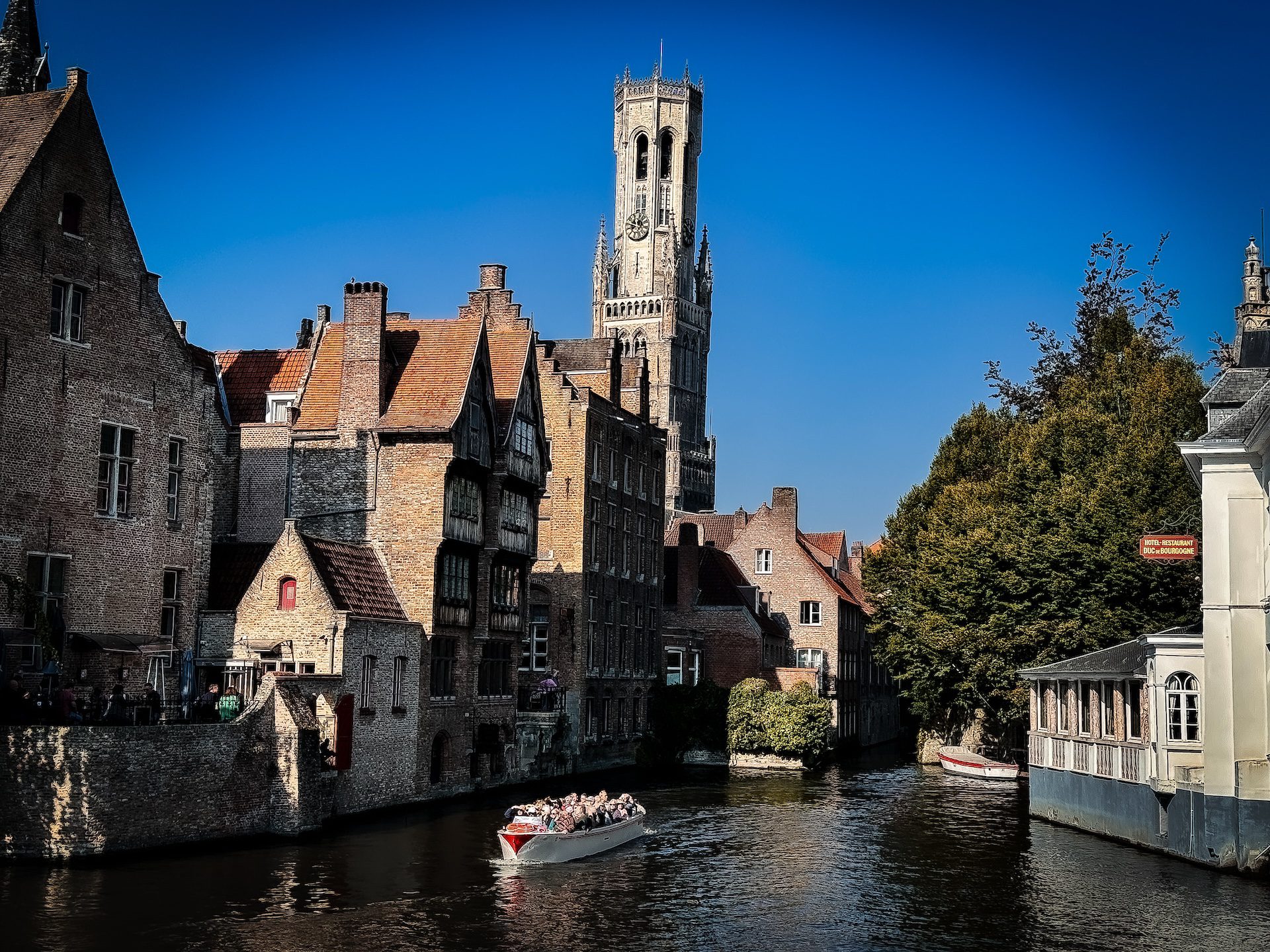
Enjoy a unique perspective on a canal boat in Bruges | Photo Credit: Jennifer Eremeeva
You can board a canal cruise from several landing stages in the city center. Here are some popular starting points:
- Rozenhoedkaai: This is one of the most picturesque spots in Bruges and a popular departure point. Address: Rozenhoedkaai, 8000 Brugge
- Huidenvettersplein: Another central location near the Groeningemuseum. Address: Huidenvettersplein, 8000 Brugge
- Wollestraat: Near the Basilica of the Holy Blood. Address: Wollestraat 32, 8000 Brugge
- Katelijnestraat: Close to the Church of Our Lady. Address: Katelijnestraat 4, 8000 Brugge
Remember that these cruises are popular, especially during peak tourist season, so you might encounter some waiting times. To avoid disappointment, book your canal cruise ahead of time. These tours of Bruges include the 30-minute canal cruise and are a good way to get a comprehensive tour of the city with time left over for other activities.
The Groeninge Museum
Art lovers will not want to miss the renowned Groeninge Museum, offering an impressive collection of Flemish art from the 15th to the 20th centuries, including masterpieces by Jan van Eyck, Hans Memling, and Gerard David. One of the most famous pieces is Jan van Eyck’s “Madonna with Canon van der Paele” (1434-1436), a masterpiece of Early Netherlandish painting known for its intricate details and symbolic complexity.
Besides the masterpieces of Flemish art from the heyday of the Northern Renaissance, the museum also showcases neoclassical works by artists like Joseph Odevaere and Joseph-Benoît Suvée. The museum’s collection extends to contemporary Belgian art, featuring pieces by expressionist painters like Constant Permeke and surrealist works by René Magritte.
The museum itself is housed in a stunning 18th-century building, which is almost as stunning as the works housed there. A must-see for art lovers!
Address: Dijver 12, 8000 Brugge, Belgium
Other Things to Do in Bruges
If this is not your first time in Bruges and you are looking to broaden your knowledge of the city’s history and famed products, consider these four venues:
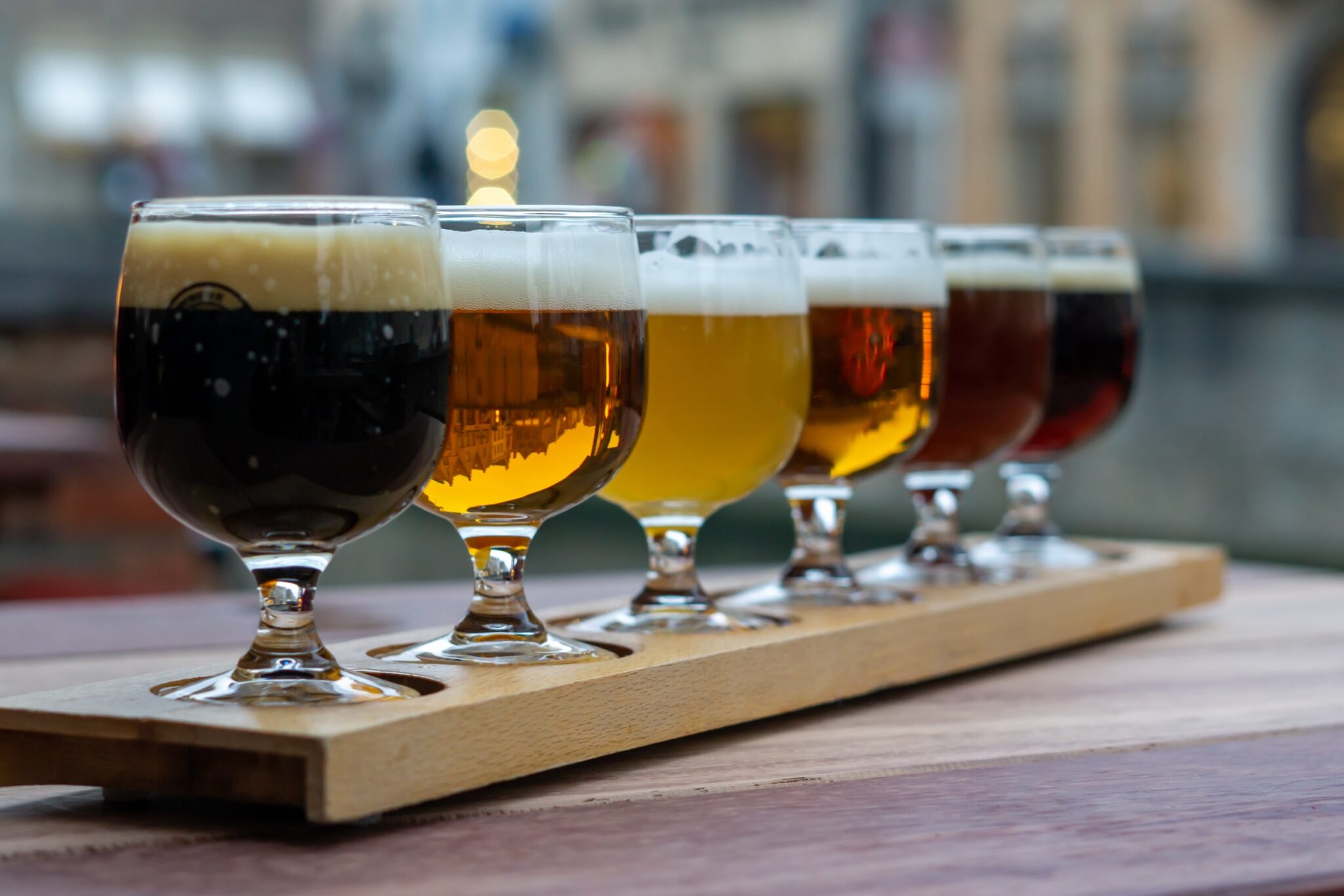
Enjoy the Beer Experience in Bruges | Photo Credit: EeCie via Shutterstock
The Bruges Beer Experience
Belgium is a major producer of beer — brewing almost 1,500 varieties in the country, a feat that earned Belgian beer culture a coveted designation of a UNESCO Intangible Cultural Heritage of Humanity in 2016.
Belgium’s beer-making tradition dates back to the Middle Ages when abbeys and monasteries began brewing beer as a safe alternative to often contaminated water. These religious institutions played a crucial role in developing and preserving brewing techniques, laying the foundation for Belgium’s renowned beer culture.
During the 12th century, hops were introduced to beer making, revolutionizing the brewing process and enhancing the beer’s flavor and preservation qualities. This innovation allowed Belgian brewers to create more diverse and complex beer styles.
The Bruges Beer Experience is an absolute must for beer fans and those who are curious about how beer is brewed. The museum presents the history, culture, and science of Belgian beer making, with important insights into the different beers brewed today in Belgium. Don’t be afraid to bring children along — this museum gets it absolutely right with multimedia and hands-on interactive exhibits that make learning about beer great fun. Your visit to The Bruges Beer Experience culminates in a visit to the tasting room, where you can sample different Belgian beers, better equipped to understand the subtle differences in flavor and aroma!
Address: Breidelstraat 3, 8000 Brugge, Belgium. Combine the Beer Experience with a visit to the renowned Brewery Bourgogne des Flanders
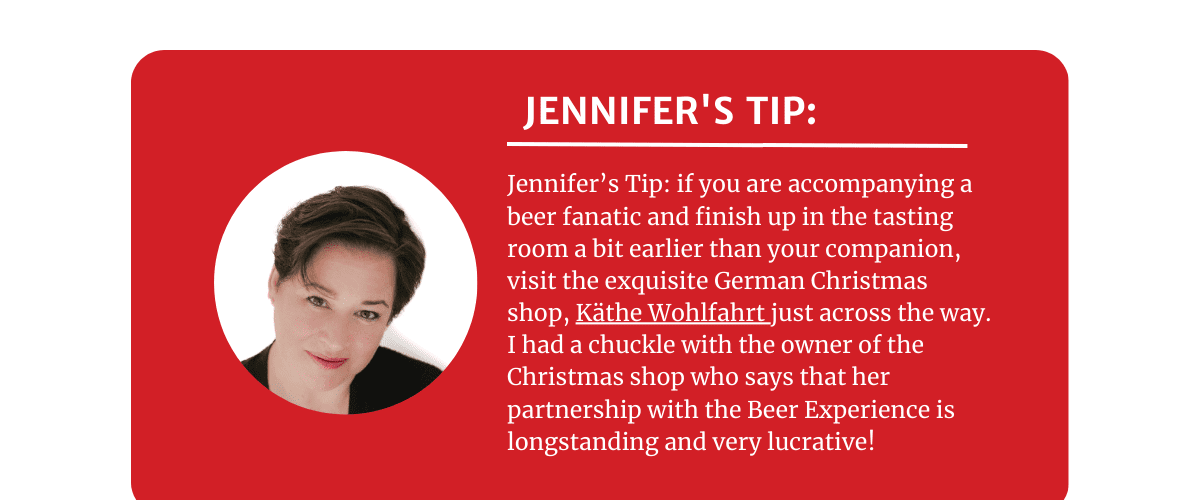
Sint-Janshospitaal
Saint John’s Hospital is one of Europe’s oldest preserved hospital buildings, dating back to the 11th century. Today, it offers a unique opportunity to learn more about both medical treatments and everyday life in the Middle Ages. The building is a magnificent example of Gothic architecture, which today houses both the historical hospital, but also an art museum, which houses the works of Hans Memling, one of the more renowned Flemish Primitive painters, who enjoyed the generous patronage of the Dukes of Burgundy.
Address: Mariastraat 38, 8000 Brugge, Book your tickets in advance.
The Historium Bruges
History buffs will not want to miss the Historium Bruges, which brings the city’s Golden Age in the medieval period alive. The Historium is on the Markt Square in an exquisite Neo-Gothic building. The museum employs innovative technology to relate the story of Bruges in its 15th century Golden Age in a highly relatable and enjoyable way.
At the heart of Historium experience is a virtual reality adventure that brings medieval Bruges to life. Visitors follow the story of Jan van Eyck’s apprentice, Jacob, as he navigates the bustling streets and canals of the city. Through a series of themed rooms with meticulously recreated historical settings, state-of-the-art projections, and soundscapes, guests are fully immersed in the sights, sounds, and even smells of medieval Bruges.
The Historium also provides one of the best views in the city from its tower, overlooking the bustling Markt Square. The Historium is the perfect blend of education and entertainment, offering keen insight into Bruges’s fascinating history.
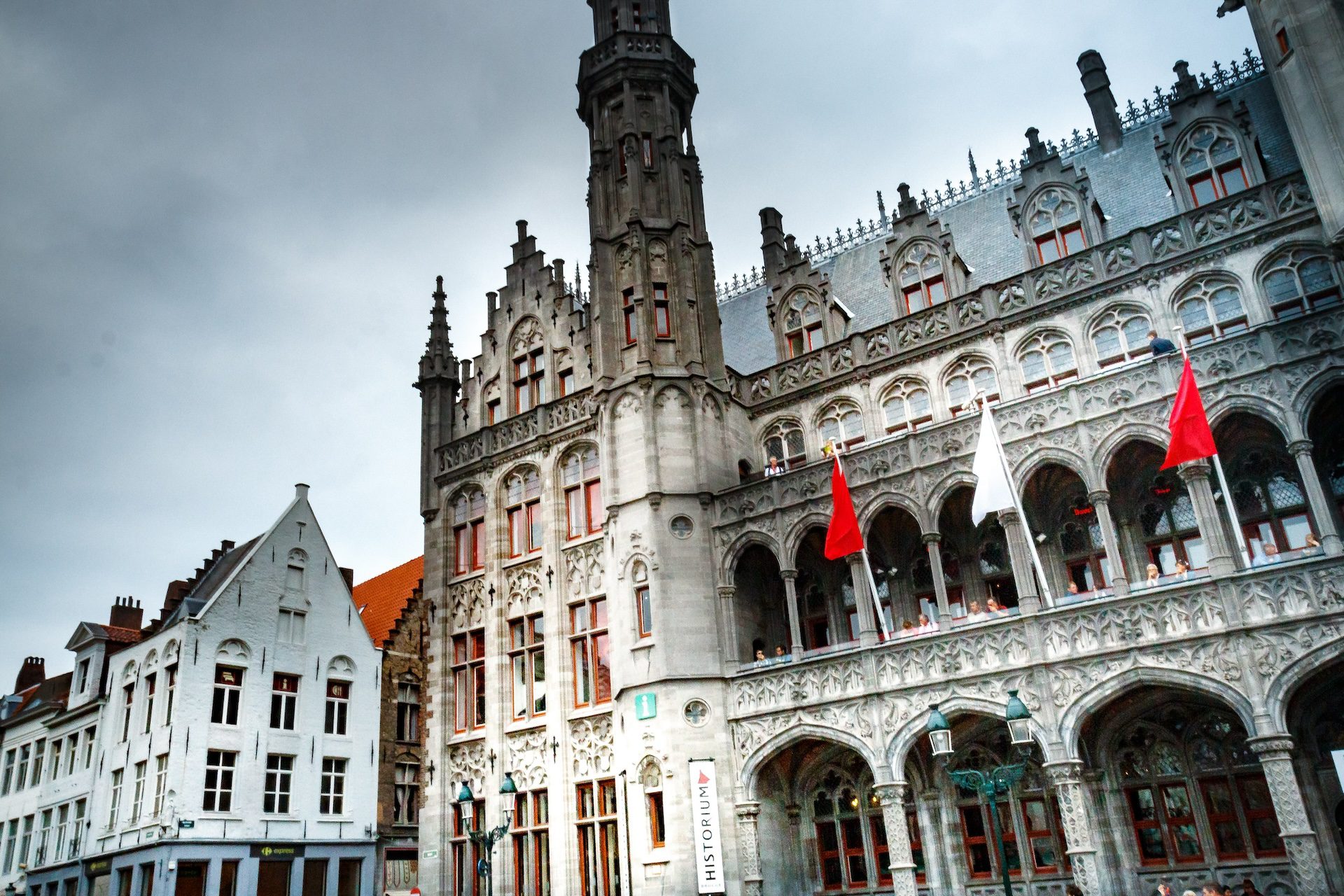
The Historium of Bruges | Photo credit: Dominique Uyttenhove via Wikimedia Commons
The Choco-Story (Chocolate Museum)
The Choco Story in Bruges offers visitors a delightful opportunity to sink into the rich history of chocolate — one of Belgium’s prized products. Belgian chocolate is known for its rich flavor and numerous iterations. Bruges boasts some of Belgium’s best chocolate, and a trip to the Choco-Story is well worth visiting to learn more about the history of chocolate. Beginning with the ancient Mayan and Aztec uses of cocoa, the museum traces the rise of chocolate as a global favorite.
A highlight of the Choco-Story is watching the very talented chocolatiers as they work to transform cocoa beans into the delectable confections for which Belgium is so renowned. The fine art of chocolate making is a key aspect of Belgium’s rich culinary tradition and a visit to the Choco-Story is an opportunity to learn more about the history of this delectable industry!
Choco-Story (Chocolate Museum) Address: Wijnzakstraat 2, 8000 Brugge
Book your entry ticket, guided tour, and tastings to Choco-Story ahead of time.
Other Food-Related Tours of Bruges
Quirky Facts and Enduring Legends
The Legend of the Bruges Bear
A beloved legend endures in Bruges about a ferocious bear who terrorized the locals of Bruges until the bold Count Baldwin I of Flanders killed the bear in the woods near Bruges. The count had fallen in love with the beautiful Judith, daughter of the King of France, who he married against the king’s wishes in 862. The pair fled Lorraine to escape the king’s wrath. During their flight, they encountered the bear, who Baldwin slew, earning himself the moniker, “Baldwin Iron Arm.” The bear became the symbol of Bruges, and you can still see it prominently displayed on the facades of the city’s buildings and in the city’s coat of arms. The city’s chocolate makers produce a delicious praline known as “the Bear of Bruges.”
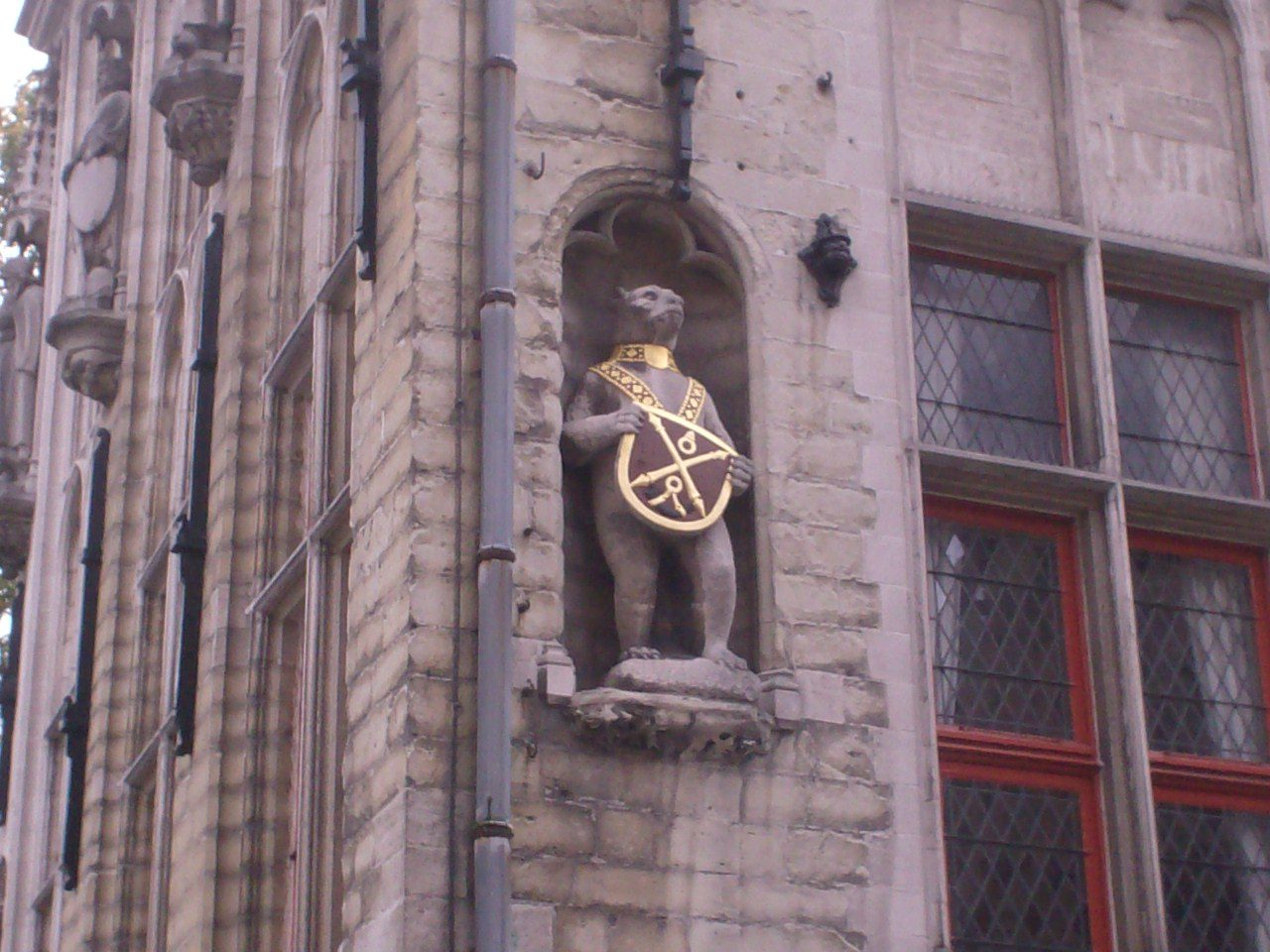
The Bear of Bruges | Photo credit: Beertje van de Loge Zeisterre via Wikimedia Commons
The Secret of the Princely Beguinage
The Beguinage, a walled complex once home to lay religious women, where they could live independently without having to take vows as a nun. This unique building in Bruges was designated a UNESCO World Heritage Site in 1998 and harbors a unique acoustic phenomenon. At certain spots within its courtyard, whispers are readily audible from surprising distances, leading to speculation about intentional architectural design for secret communications. Today the beguinage is the only remaining one in Belgium, which functions as a convent for the Benedictines.
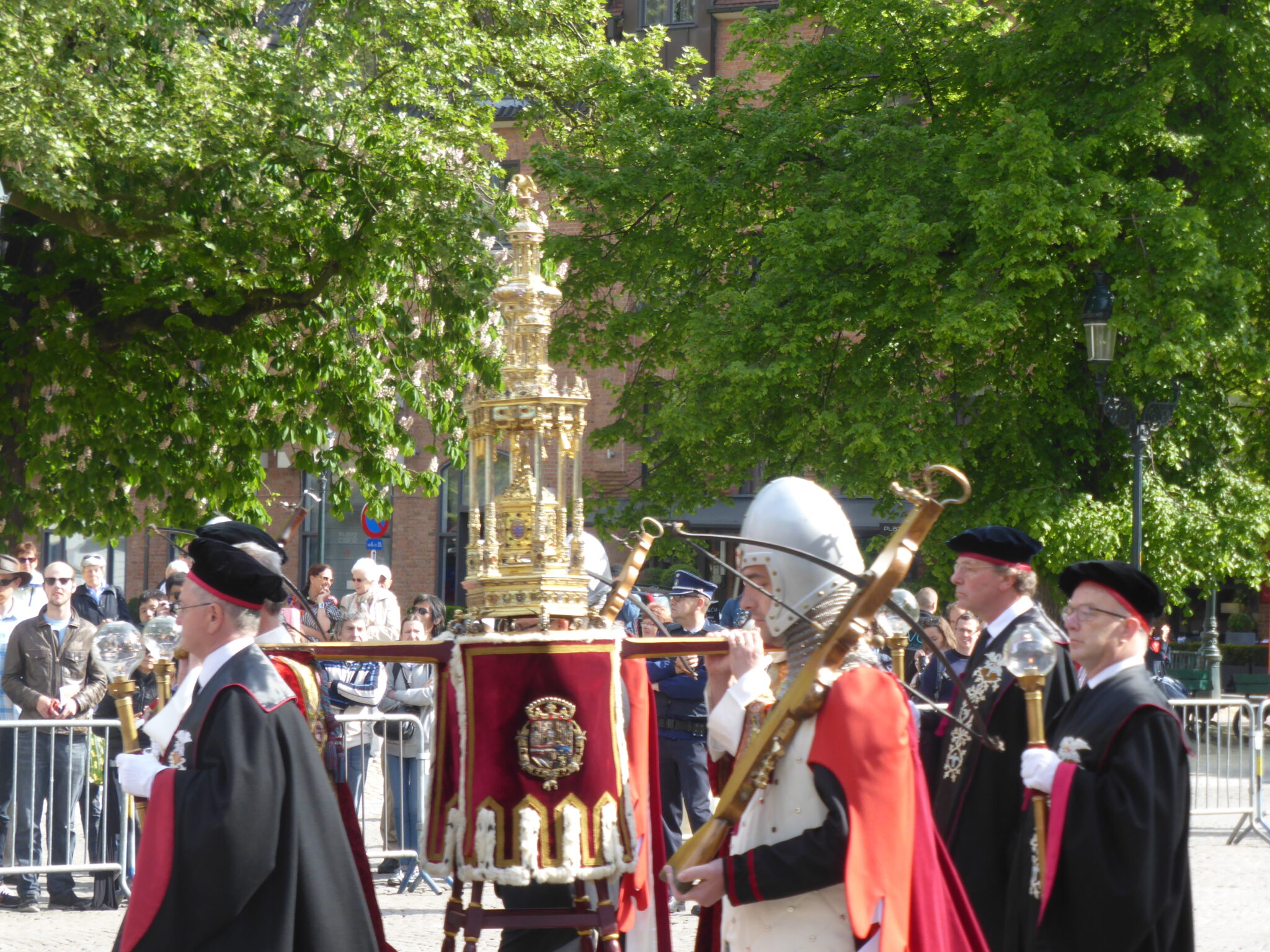
The Procession of the Holy Blood | Photo credit: Jacques Le Letty
The Procession of the Holy Blood
Each year, Bruges hosts the Procession of the Holy Blood, during which the vial allegedly containing Christ’s blood is taken from the Basilica of the Holy Blood is paraded through the streets of Bruges. The procession, recognized by UNESCO, draws thousands of spectators annually.
The vial of Christ’s blood, housed in the Basilica of the Holy Blood, is a centerpiece of Bruges’ religious heritage. This small vial, encased in a gold-and-glass cylinder, is said to contain a cloth with Jesus’ blood, brought to Bruges by Thierry of Alsace after the Second Crusade in 1150. The relic is displayed for public veneration every Friday and during the annual procession. Interestingly, in 1310, Pope Clement V issued a papal bull granting indulgences to pilgrims who visit the Holy Blood. Despite skepticism from some historians about its authenticity, the relic continues to be a source of faith and fascination for many, attracting pilgrims and tourists alike to this medieval city.
Learn about other mysteries of Bruges in this fascinating walking tour: Walking Tour Bruges: Exciting Stories, Mysteries, People
What to Eat and Drink in Bruges?
Belgian Cuisine
Belgian cuisine is often overlooked in the panoply of European cuisines, dominated by French, Italian, and Spanish. What a mistake this is! Belgian cuisine reflects the comparatively young country’s complex history, fusing a French focus on flavor and subtle blend of ingredients with a more Germanic heartiness. The result is a splendid mix of different dishes, using the regions exceptionally good produce, dairy, and abundant seafood.
Belgian Fries
What we call “French Fries” were invented in Belgium, and there is no better place to sample these fried potatoes and enjoy them with the traditional mayonnaise rather than ketchup. You can learn more about Belgian fries at Bruges’s popular Frietmuseum: the world’s first and only museum dedicated to the history of potatoes and the art of making fries. Located in the Saaihalle, a beautiful 14th-century building, the museum offers visitors a unique and entertaining experience centered around one of Belgium’s most beloved foods. At the end of the tour, visitors can enjoy authentic Belgian fries in the museum’s tasting room.
Address: Vlamingstraat 33, 8000 Brugge, Belgium. Book your entry to the popular Frietmuseum ahead of time!
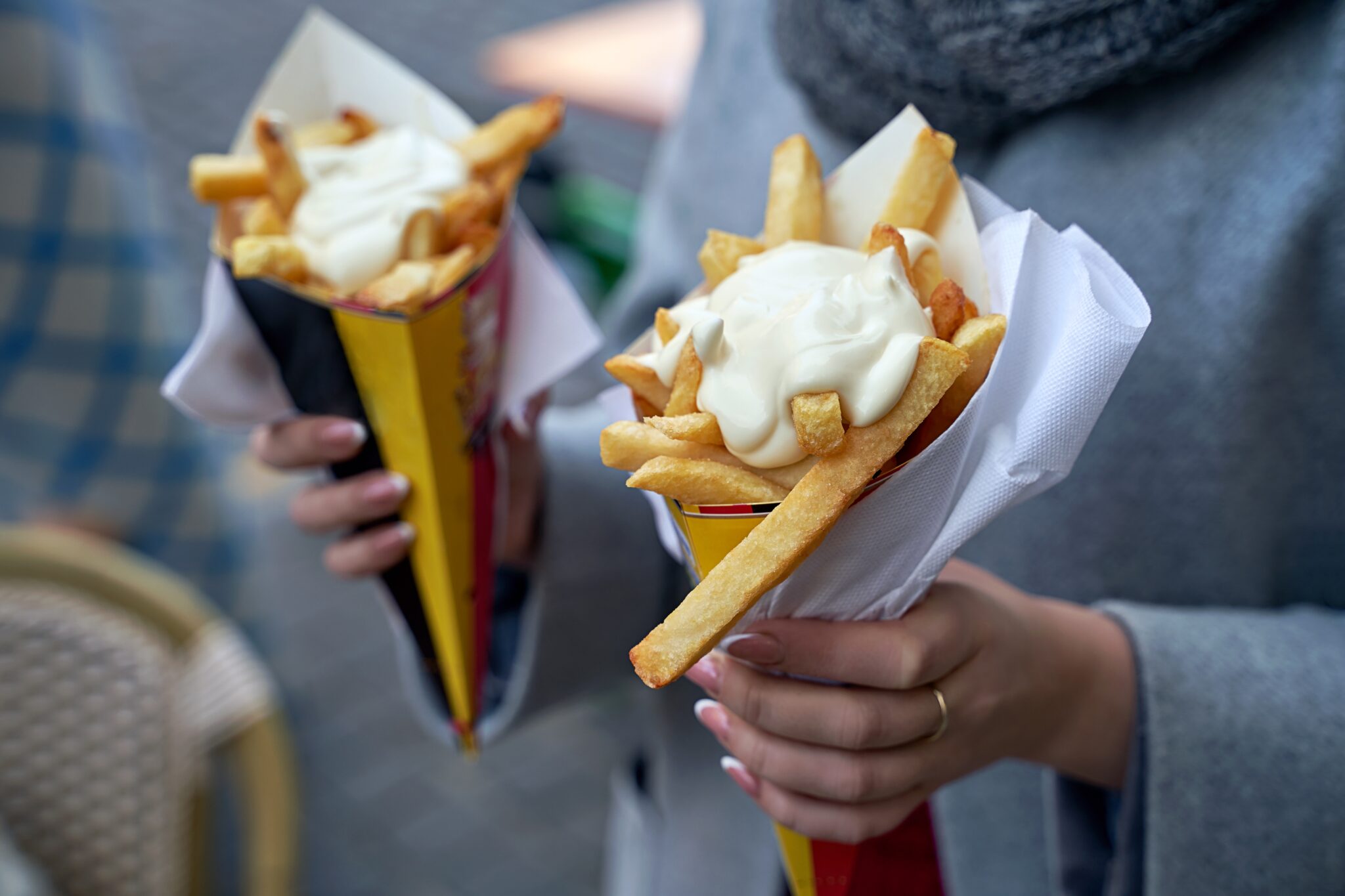
Belgian Fries | Photo credit: Oleksandr Berezko via Shutterstock
A key pillar of Belgian cuisine is fish and seafood: the country has a long North Sea coast and makes the most of the bounty of shellfish and fish found in these waters. Belgium is also home to some of Europe’s best pastureland for cattle, and dairy is a big part of the country’s cuisine, as is meat. For a small country, Belgium produces a great deal of fresh fruits and vegetables, and this seasonal bounty is another important aspect of Belgium’s excellent cuisine.
As mentioned above, beer is a key industry for Belgium and a must-try beverage for visitors to Bruges. Beer is not only served with meals, but it is also a key ingredient in numerous traditional stews and sauces, such as carbonade flamande (beef stew) and moules à la bière (mussels in beer), which incorporate beer to add depth and flavor.
Main dishes in Belgium often rely on slow cooking and braising for full-flavored stews and dishes that feature tender meat and delectable sauces, such as waterzooi (a creamy chicken or fish stew) and lapin à la gueuze (rabbit cooked in gueuze beer).
Leave room for the sweet endings to every meal, for which Belgium is so famous! Chocolate dishes are the signature calling card of both Bruges and Belgium, as are the yeasty waffles topped with jam and cream.
Put yourself in the capable hands of a Belgian waitperson and prepare to be pleasantly surprised by the range of flavors and ingredients that make up Belgian cuisine!
Food & Drink to Sample in Bruges
- Moules-Frites: If you have only one day in Belgium, be sure to sample this classic Belgian dish of mussels braised in a range of sauces (I always go for cream and white wine) with copious amounts of garlic and fennel. This is traditionally served with crispy fries but be sure to ask for some extra bread to soak up the juices! Try it at Den Dyver (Dijver 5).
- Carbonade Flamande: A hearty beef stew cooked in beer. Sample this at Cambrinus (Philipstockstraat 19) along with their extensive beer menu.
- Waterzooi: A creamy chicken or fish soup. Enjoy it at De Vlaamsche Pot (Helmstraat 3) for an authentic taste.
- Stoemp: The ultimate comfort food: mashed potatoes mixed with vegetables. Try it at Gruuthuse Hof (Mariastraat 76).
- Flemish Asparagus: When in season, don’t miss this local delicacy. Restaurant Patrick Devos (Zilverstraat 41) often features it on their menu.
- Tomate Crevette: Tomatoes stuffed with grey shrimp and mayonnaise. Sample this at De Bottelier (Ezelstraat 28).
Sweet Treats
- Belgian Waffles: Try both Brussels-style (rectangular) and Liège-style (round) waffles. House of Waffles (Wollestraat 31) offers a variety of toppings.
- Belgian Chocolates: Visit The Chocolate Line (Simon Stevinplein 19) for innovative flavors and beautiful presentations.
- Speculoos: Spiced shortcrust biscuits. Find them in most bakeries or try them as a spread.
- Cuberdon: Cone-shaped gum Arabic candies. Purchase these at Confiserie Zucchero (Wollestraat 31).
- Crème Brûlée: While not exclusively Belgian, many restaurants in Bruges offer excellent versions. Try it at Rock Fort (Langestraat 15).
Drinks to Savor
- Belgian Beer: With over 1,500 varieties, don’t miss trying local brews. Visit ‘t Brugs Beertje (Kemelstraat 5) to sample a wide selection.
- Trappist Beers: Try world-renowned Trappist beers including Westvleteren, Chimay, or Orval at De Garre (De Garre 1).
- Lambic Beers: Sample these unique spontaneously fermented beers at Café Rose Red (Cordoeaniersstraat 16).
- Jenever: A juniper-flavored spirit not unlike gin, which is designed to be sipped neat.
Recommended Restaurants in Bruges
It is hard to have a poor meal in Bruges: often the choice of restaurant has more to do with its proximity to a lovely vista.
- De Vlaamsche Pot: Traditional Flemish cuisine in a cozy setting. Address: Helmstraat 3, 8000 Brugge. Phone: +32 50 34 01 89
- Park Restaurant: Michelin-starred fine dining. Address: Minderbroedersstraat 1, 8000 Brugge. Phone: +32 50 33 82 59
- Bistro Refter: Casual bistro with local specialties. Address: Molenmeers 2, 8000 Brugge. Phone: +32 50 33 69 94
Shopping in Bruges
Shopping is a highlight of visiting Bruges! Enjoy strolling through the elegant streets and popping into the shops selling lace, chocolates, Belgian crafts, and beer!
- Belgian Chocolates: Visit The Chocolate Line for artisanal chocolates. Address: Simon Stevinplein 19, 8000 Brugge, Belgium Phone: +32 50 34 10 90 Website: www.thechocolateline.be.
- Christmas Ornaments: Käthe Wohlfahrt Address: Breidelstraat 4, Brugge Belgium. Website: www.kaethe-wohlfahrt.com/kaethe-wohlfahrt-bruegge-24/
- Lace: Shop for traditional Bruges lace at ‘t Apostelientje. Address: Balstraat 11, 8000 Brugge, Belgium Phone: +32 50 33 02 93 Website: www.apostelientje.be.
- Beer: Purchase local and rare Belgian beers at 2be Beer Wall. Address: Wollestraat 53, 8000 Brugge, Belgium Phone: +32 50 61 12 22 Website: www.2-be.com.
- Antiques: Browse antiques and vintage items at Depot d’O. Address: Wollestraat 9, 8000 Brugge, Belgium Phone: +32 50 34 64 64 Website: www.depotdo.com.
- Local Artwork: Find unique pieces at Gallery XO. Address: Wollestraat 37, 8000 Brugge, Belgium Phone: +32 50 67 74 70 Website: www.galleryxo.be.
- Handmade Soaps: Shop for artisanal soaps at Soap & Co. Address: Breidelstraat 8, 8000 Brugge, Belgium Phone: +32 50 33 59 39 Website: www.soapandco.be.
The History of Bruges
With its picturesque canals and stunning architecture, Bruges is often nicknamed “The Venice of the North.” Like Venice, Bruges’s beauty is the result of keen commercial success, which made the city a medieval titan and financial pioneer in Northern Europe.
Early Beginnings
Bruges, located in the country of Flanders, began as a fortress to repel invasions from the Vikings. The name seems to come from the Old Dutch word “brugga” meaning bridge, which refers to the many bridges that spanned the canals of the city, along the Oud Zwin River. The Vikings and Frisians were the first to drain the boggy swamps of the Low Countries and graze sheep in the resulting pastureland. From this time, the fortunes of Bruges and other cities in the county of Flanders would and fall on the back of the wool trade. From the Dark Ages, the city was known for its numerous weavers, but could not be considered a major urban center.
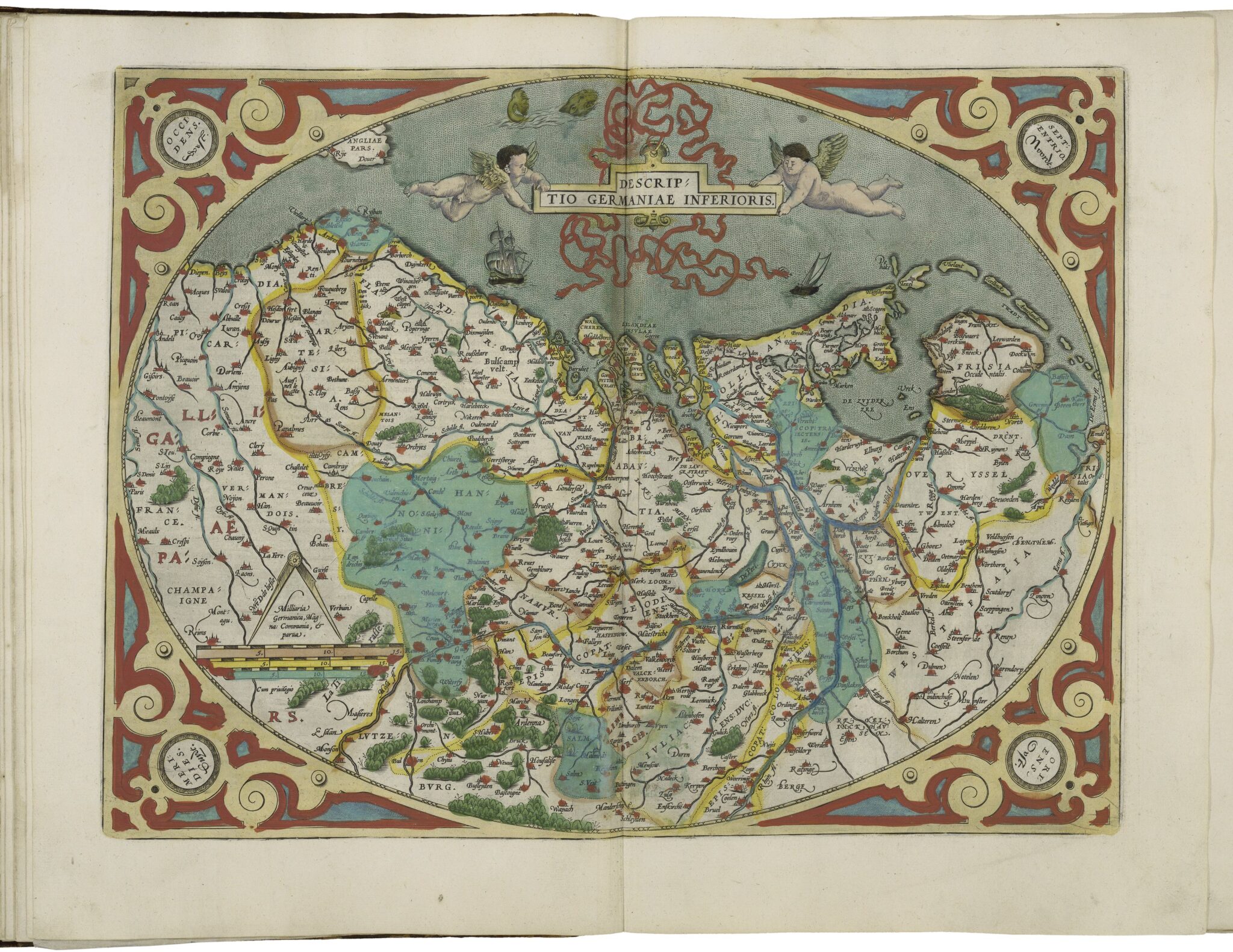
Map of the Netherlands by Abraham Ortelius | via Wikimedia Commons
This changed in 1134, when a major storm opened up the Zwin inlet, and suddenly Bruges had direct access to the flourishing trade in the North Sea. This strategic location set Bruges up to become the world’s first financial center, connected to other major European ports. Bruges became an important kontor or representative office of the Hanseatic League — the association of merchant towns led by Lubeck, which dominated the Baltic and North Sea trade in the Middle Ages.
Merchants flocked to Bruges, in pursuit of the particularly fine cloth woven in Flanders, which was light but durable. Bruges’s wool trade expanded exponentially, and ultimately the Flemish had to import wool from England to weave their famous cloth. Anyone associated with the wool trade — dyers, weavers, merchants, and long-distance traders — stood to make a fortune.
It was in Bruges that financial services made massive strides as foreign merchants arrived in Bruges, and set about exchanging their currencies and letters of credit with one another at inns in Bruges. The Der Beurze Inn became the most famous of these, and the name of the inn gives us the modern name for “stock exchange” in many European languages: borso in Italian, bourse in French, and birzha in Russian. The Der Beurze Inn still stands in the main Markts Square, welcoming foreigners to Bruges in its modern-day iteration as a pizza parlor. Something important was happening in Bruges: the creation of the world’s first financial center of a city, soon to be replicated in other cities across Europe.
This dynamic economy and innovative financial systems made Bruges one of the wealthiest and most influential cities in all of Europe from the 13th to the 15th century.
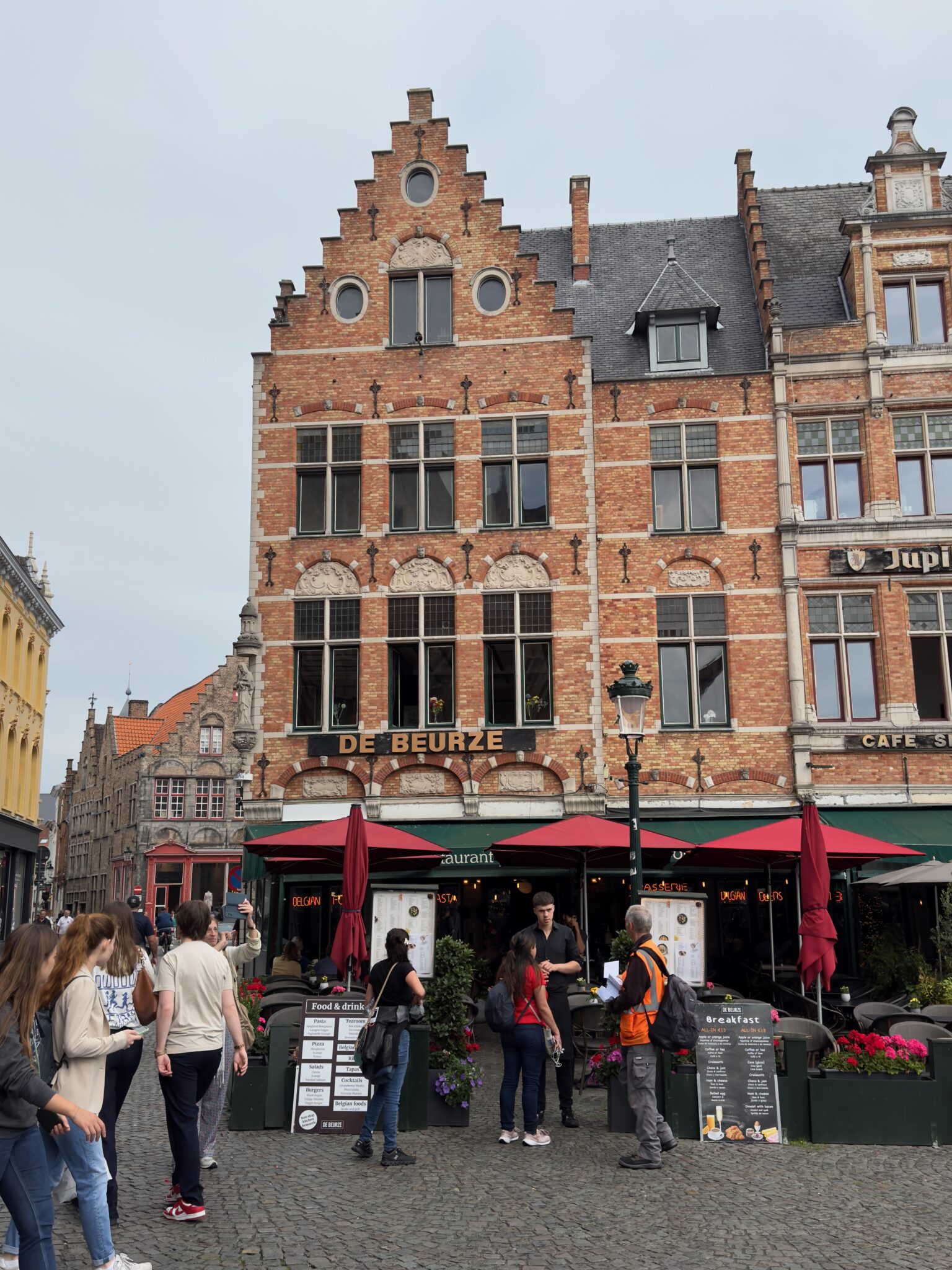
Der Beurze Inn | Photo credit: Jennifer Eremeeva
The Mighty Towers of Bruges
Bruges’s rise in prosperity can be measured in its dramatic skyline of spires and towers of churches and municipal buildings, erected by leading citizens as thanks for their good fortune. The major edifices are listed below, and each is well worth a visit.
The Burgundians
The 15th century saw Bruges become part of the mighty empire of the Dukes of Burgundy thanks to the marriage of Philip the Bold to Margaret of Flanders. Philip made Bruges one of his primary residences, which attracted more well-heeled visitors to Bruges, including noblemen, merchants, and gifted artists and architects who would add to the city’s splendors. Jan van Eyck, a pioneer in oil painting, captured the sumptuous wealth of Bruges in his famous Arnolfini Portrait in 1434, which today hangs in the National Gallery of London. The portrait of the Italian cloth merchant and his wife showcases the wealth and sophistication of the foreign merchant community in Bruges.
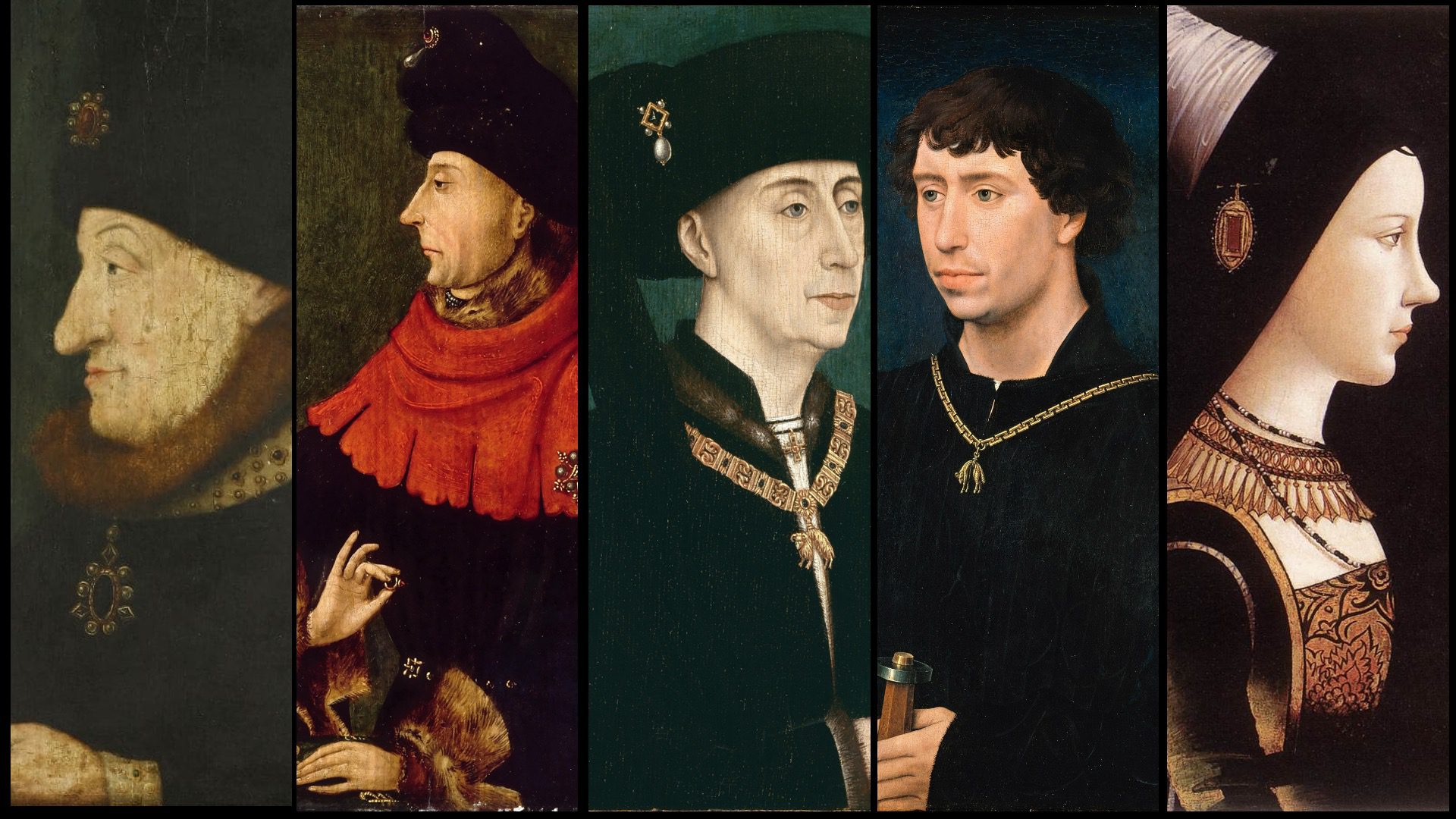
The Dukes of Burgundy
The Dukes of Burgundy understood soft power better than any of their peers, and because of this, Bruges continued to prosper financially, and the generous patronage of the dukes spearheaded a flourishing of the arts and crafts, including tapestry weaving, miniature painting, sculpture, and lacemaking for which the city is still famous.
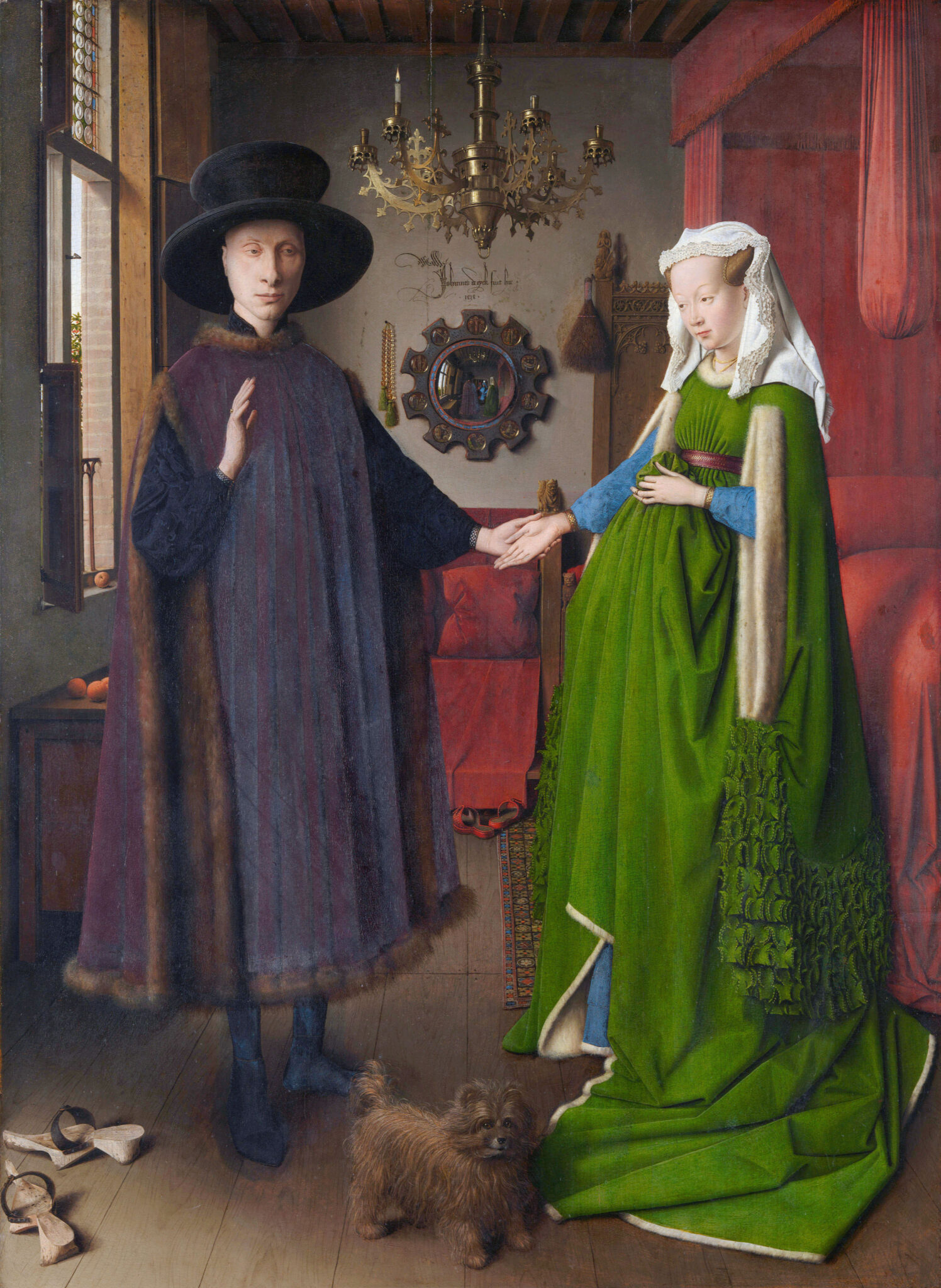
The Arnolfini Portrait | Jan van Eyck | Public Domain via Wikimedia Commons
Decline and Rediscovery
Mother Nature once again determined the fate of Bruges when the Zwin Canal silted up, blocking the city’s direct access to the sea, which hindered trade. This is the reason cruise ships have to dock at Zeebrugge. By the 16th century, Antwerp, with its direct access to the sea, had totally eclipsed Bruges as the key financial center of the Low Countries. Bruges became a forgotten backwater, largely ignored by the rest of Europe.
Revival in the 19th Century
Bruges’s fortunes changed with the publication of Georges Rodenbach’s novel “Bruges-la-Morte” in 1892. This ignited fresh interest in the city’s exquisite medieval architecture, creating a tourism boom that funded careful restoration of the city’s key edifices. The city continues to welcome visitors to its elegant facades and charming canals. The entire historic city center of Bruges has been designated a UNESCO World Heritage Site, and Bruges welcomes millions of visitors each year.
Practical Information
Where’s the Ship?
Do not be daunted by the distance from the Port of Zeebrugge to the historic center of Bruges. Check with the Shore Excursions Department if the ship plans to provide a shuttle bus to Bruges, or an excursion that allows you free time in the city. This will be the most convenient way to get to Bruges. If the ship provides a shuttle bus to nearby Blankenberg, you can walk to the train station and catch a train to Bruges (approximately 15 minutes’ ride, and trains leave every hour). Note that Zeebrugge is a large, commercial port and you may not walk around it on your own: the port authority provides a free shuttle between the ship and the cruise terminal. You can also arrange for a private car to take you to Bruges or this round-trip shuttle bus.
I have listed numerous excursions above, which offer the option to be picked up in Zeebrugge, which would be the most convenient option of all.
Search for Accommodation
Language
For a small country, Belgium has a complicated linguistic situation, which reflects the country’s long history and unique cultural development. Historically, French was the language of the elite and government, while Dutch was seen as the language of the common people. The “language struggle” in the 19th and 20th centuries led to greater recognition of Dutch and eventually to the federalization of the country.
Today, Belgium is officially trilingual:
- Dutch (Flemish): Spoken in Flanders, the northern part of Belgium, by about 60% of the population.
- French: Predominant in Wallonia, the southern region, and spoken by approximately 40% of Belgians.
- German: A small minority (less than 1%) in the eastern cantons bordering Germany speaks German.
Brussels, the capital, is officially bilingual (Dutch and French), although French is more widely used in practice.
Most of the people who work in the hospitality sector in Bruges speak good English.
Currency
The currency of Belgium is the Euro. Credit cards are widely accepted in Belgium.
Walking Conditions
Bruges is an easy city to navigate on foot, though its cobblestone streets are best navigated with sturdy footwear.
Related Reading
Be sure to explore my Destination Resources about the history, culture, and cuisine of the Low Countries. You will find plenty of books, articles, podcasts, films, and other audio-visual entertainment about Bruges and other Low Countries destinations.

I hope you’ve enjoyed this 8-Hour Guide. I make every effort to ensure that all of the information provided is current and accurate. I encourage you to check restaurant and museum websites to ascertain opening times and other relevant information. If you have a destination you’d like me to present as an 8-Hour Guide, please use the link above to email me.
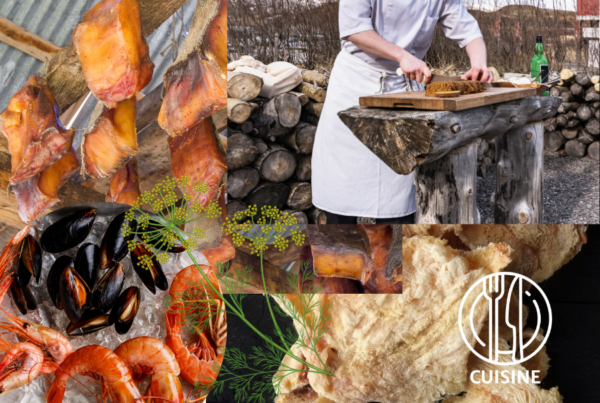 The Must-Try Things to Eat and Drink in Iceland
The Must-Try Things to Eat and Drink in Iceland
The Must-Try Things to Eat and Drink in Iceland
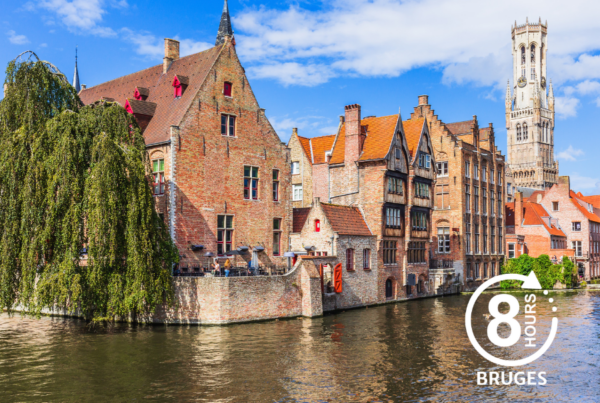 8-Hours in Bruges, Belgium: The Perfect Itinerary
8-Hours in Bruges, Belgium: The Perfect Itinerary
8-Hours in Bruges, Belgium: The Perfect Itinerary
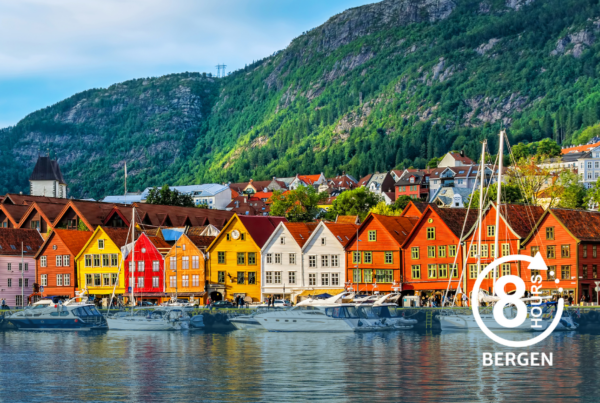 8 Hours in Bergen: A Guide to Norway’s Second City
8 Hours in Bergen: A Guide to Norway’s Second City
8 Hours in Bergen: A Guide to Norway’s Second City
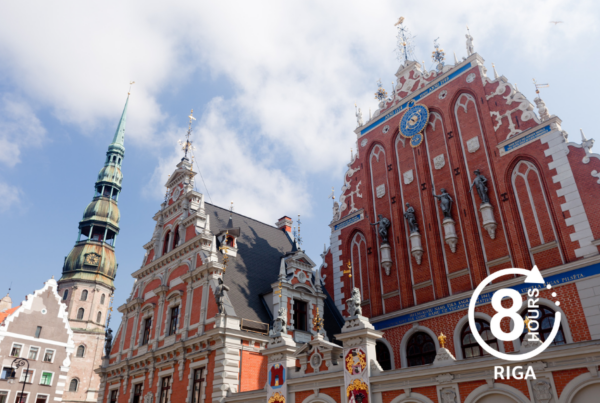 8 Hours in Captivating Riga, The Capital of Latvia
8 Hours in Captivating Riga, The Capital of Latvia
8 Hours in Captivating Riga, The Capital of Latvia
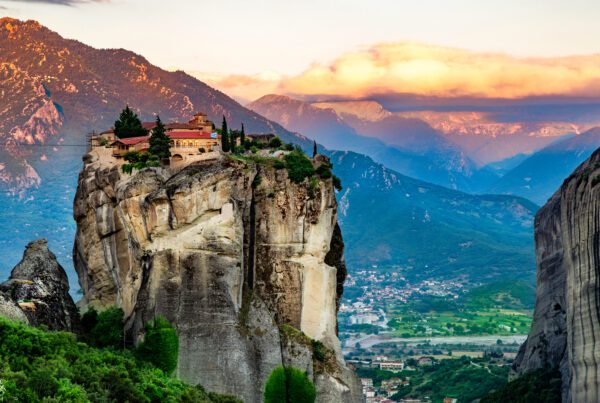 Day Trips from Athens: Meteora, Greece’s Hidden Gem
Day Trips from Athens: Meteora, Greece’s Hidden Gem
Day Trips from Athens: Meteora, Greece’s Hidden Gem
 My Top 10 Travel Planning Tools
My Top 10 Travel Planning Tools
My Top 10 Travel Planning Tools
 7 Steps to a Perfect Travel Bucket List
7 Steps to a Perfect Travel Bucket List
7 Steps to a Perfect Travel Bucket List
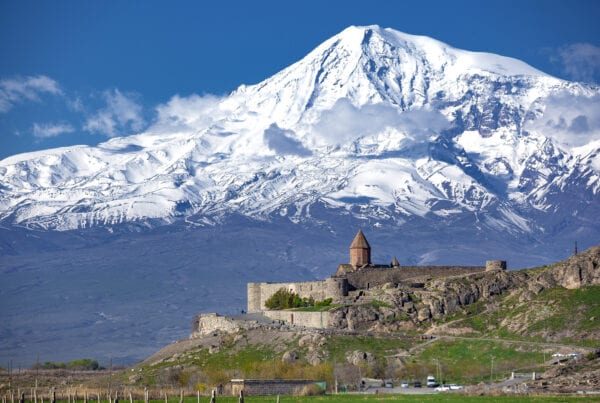 The Mysteries of Mount Ararat
The Mysteries of Mount Ararat
The Mysteries of Mount Ararat
 Budapest’s Iconic Parliament
Budapest’s Iconic Parliament
Budapest’s Iconic Parliament
 Podcast: Moscow Monumental
Podcast: Moscow Monumental
Podcast: Moscow Monumental
 Podcast: Around the Coast in 80 Days
Podcast: Around the Coast in 80 Days
Podcast: Around the Coast in 80 Days
Featured Headlines
Check out the latest news from around the world
Featured Headlines
Check out the latest news from around the world
Featured Headlines
Check out the latest news from around the world

